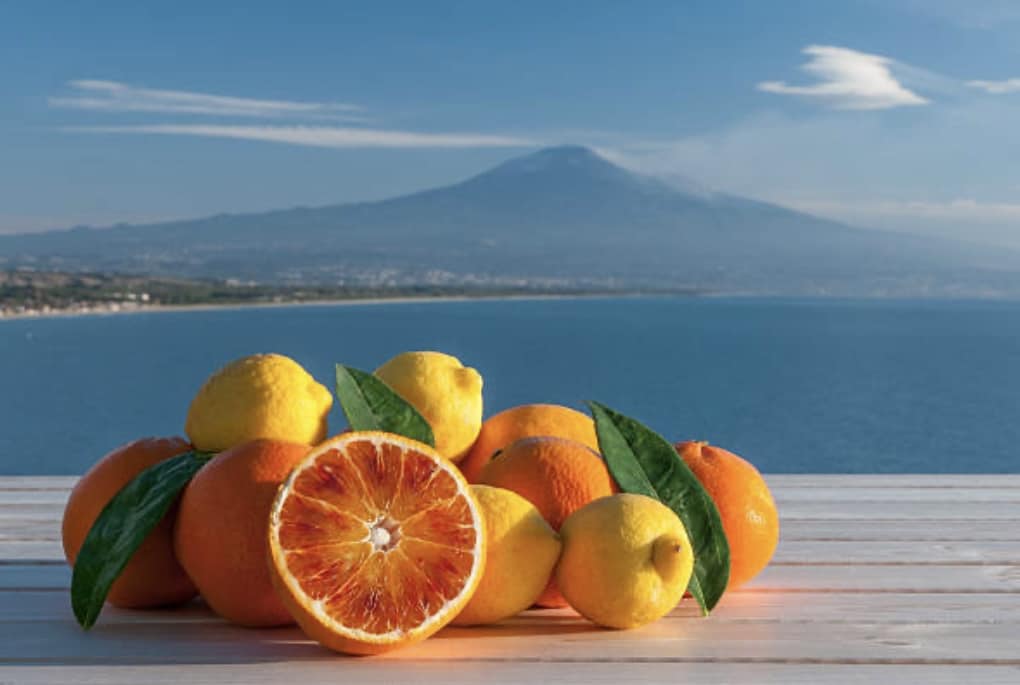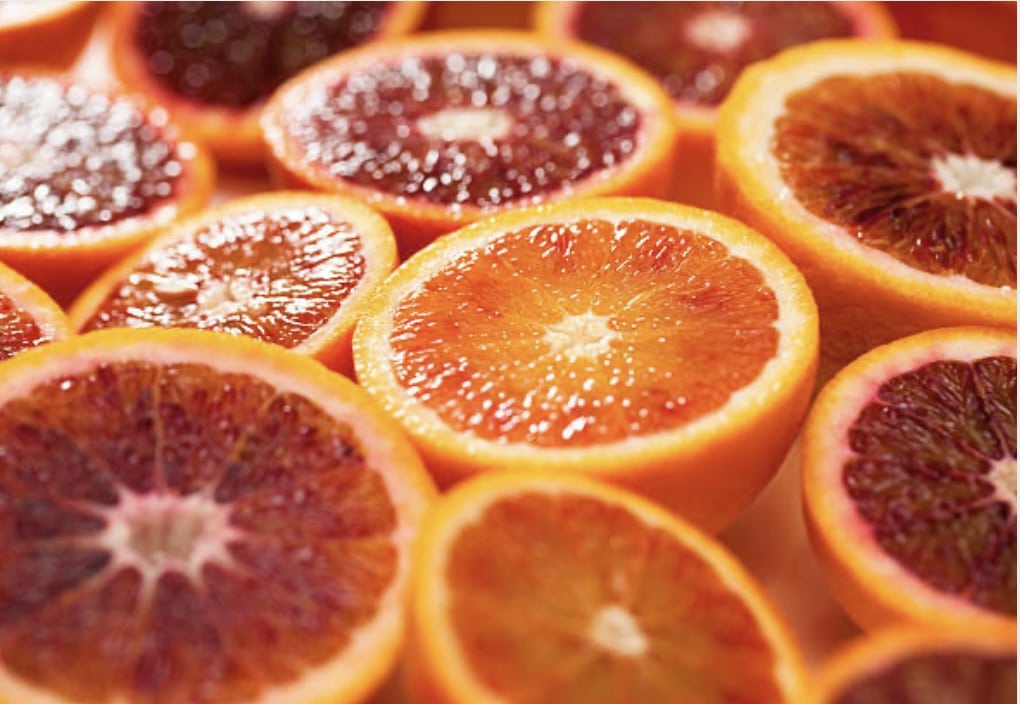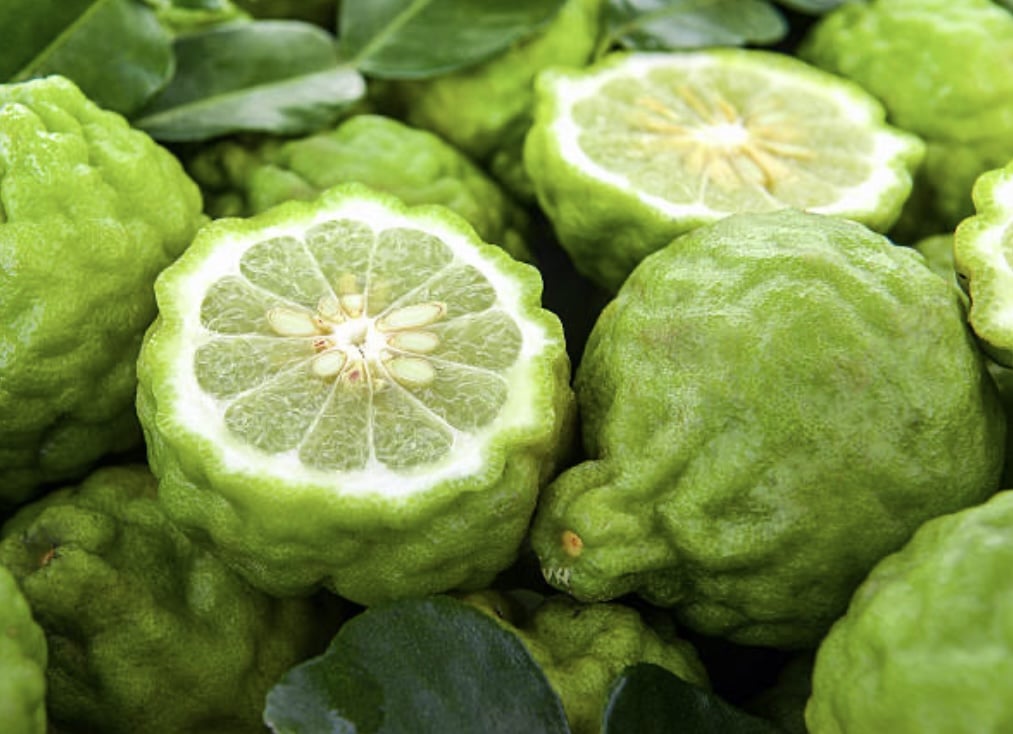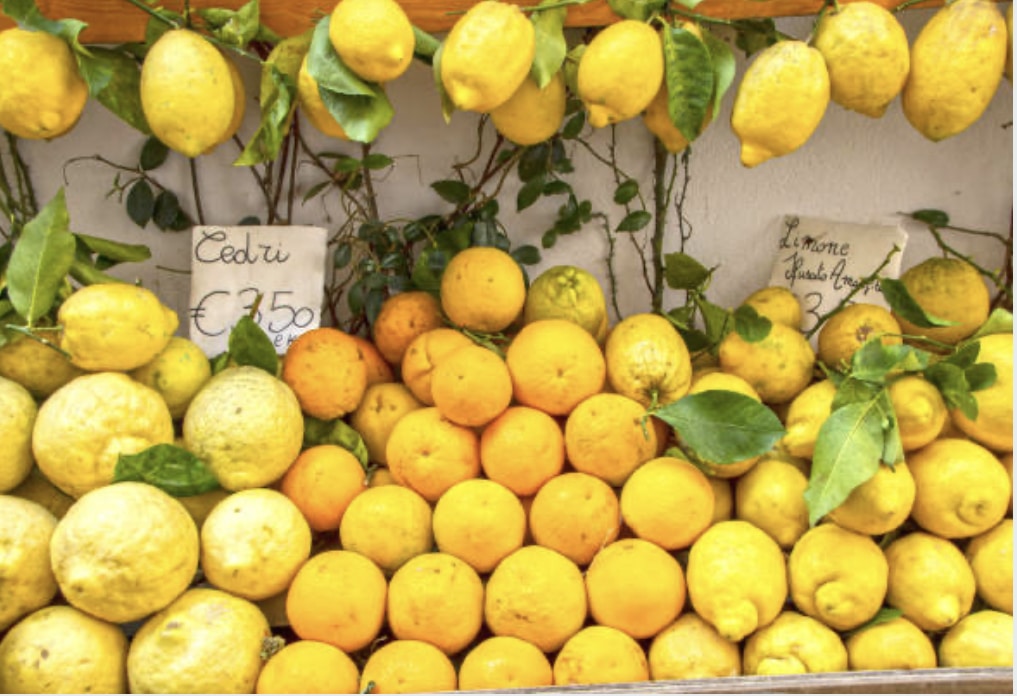In North America, the word citrus often calls to mind states in the southern half of the continent such as Florida. Thoughts will also turn to the south for Italians, with some of the most prized agrumi (citrus fruits) hailing from regions like Campania, Calabria, and Sicilia.
Southern Italian citrus crops include the widely known fruits such as oranges, lemons, and clementines as well as lesser-known ones like bergamot and citron.

Citrus (much like many other food products) were introduced to the southern regions of Italy by the Arabs. It was the Arab invasion in 850 AD that brought the fruits to Italy. Places like Sicily and Calabria, with their warm climates and mild winters, provided the perfect conditions for the cultivation of citrus. By the 18th and 19th centuries, Sicily had become a strategic location for growing and selling citrus fruits, turning into a globally recognized producer of oranges.
Perhaps the most famous Sicilian citrus crop is the Arancia Rossa di Sicilia (the blood orange of Sicily). This crimson-coloured citrus fruit grows in the volcanic soils surrounding Mount Etna. Its distinct hue comes from the high level of pigments called anthocyanins that are produced because of diurnal temperature (the variation between a high air temperature and a low temperature that occurs during the same day). There are three different varieties of the arancia rossa: Tarocco, Moro and Sanguinello and they are characterized by their tart taste.

Also of note is the Sicilian Arancia di Ribera grown on the fertile riverbanks of the Verdura, Magazzolo and Plantini. These are oranges that are particularly sweet and juicy finding their way into many dishes from risotto with scallops and cod carpaccio to couscous Trapanese and an almond and orange zest brittle known as Aranzada.
Last but not least, the bitter orange known as Melangolo. Characterized by a strong acidity and a juice with bitter and salty notes, this orange is not eaten in its natural state. The melangolo is often used to make liqueurs (such as Amaro), orange blossom water, and for making preserves and candied fruit (which are often found as garnishes on cannoli and cassata). The most common use for these oranges however is in the perfume industry because of their high concentration of aromatic essential oils found in their peels and flowers.
While lemons are also prominent in Sicily, the most recognized lemons are perhaps those that are cultivated on the Amalfi coast. For centuries, they have been gracing the hillsides of every village in the area with their gorgeous green and yellow colours and intoxicating fragrance. Amalfi lemons are prized for their low acidity and delicate, sweet flavour. They are enjoyed freshly sliced, sprinkled with salt, mint leaves, and drizzled with vinegar. They are also used for making jams, preserves, sorbetti, limoncello, and desserts such as the famed delizie al limone (lemon delights: mini sponge cakes filled and coated with lemon custard).

When it comes to clementines, Calabria is considered the largest contributor, however, worth noting is the smallest member of the mandarin family, Puglia. The Clementine del Golfo di Taranto have been cultivated since the 18th century. These clementines are grown off the coast of Taranto where they flourish in the warm, sunny Mediterranean climate. Clementine del Golfo di Taranto refers to several cultivars: Comune, Fedele, Precoce di Massacra (Spinoso) and Grosso Puglia. These clementines are seedless and easily distinguished by a slightly flattened shape, deep, orange-coloured skin, an intense and long-lasting fragrance, and a particularly sweet flavour. They have a high content of vitamin C and, when not enjoyed fresh, they are used in the preparation of juices, syrups, sorbets, and marmalades.
The region of Calabria as mentioned, is known for its flavourful clementines along with two other unique agrumi, cedro (citron) and bergamotto (bergamot).
Bergamot is a crop grown only in Calabria and some botanists believe it originated in this southern region thanks to a spontaneous mutation. This fruit resembles a small orange with a green to yellow skin colouring. Its pulp is very bitter, and it has a tart juice. Bergamot, as tea drinkers will know, is a common flavouring found in Earl Grey. It is also used as a flavouring agent for creams and various liqueurs, soft drinks, herbal liqueurs, sweets, candied fruit, jams, cakes, ice cream and chocolate. Its essence also has non-culinary uses; it is highly sought-after to create a range of fine fragrances and cosmetics and it is used in the pharmaceutical industry for its antiseptic and antibacterial powers.

The second niche citrus is cedro (the citron, also known as cedar fruit). Cedro is actually one of the four original varieties of citrus fruits– along with pomelo, mandarin and papeda. It grows along Calabria’s northwestern coastline which is often referred to as the Riviera of the Citron. Citron is a large lemon with an oblong shape that has a thick rind and is similar in taste to a lemon, but milder. Its center pulp is quite small, and it has a wide pith that is edible and not bitter like other citruses. It is traditionally candied and found in fruit cakes and panettone. Cedro is also used in marmalade, syrup, liquors, soda, and cookies and even used to aromatize extra virgin olive oil.

These are a mere few of the many varieties of Italian agrumi; each of them distinct in their shape, colour and flavour and all of which you will not mind life (or the bel paese) giving you.



Add a comment